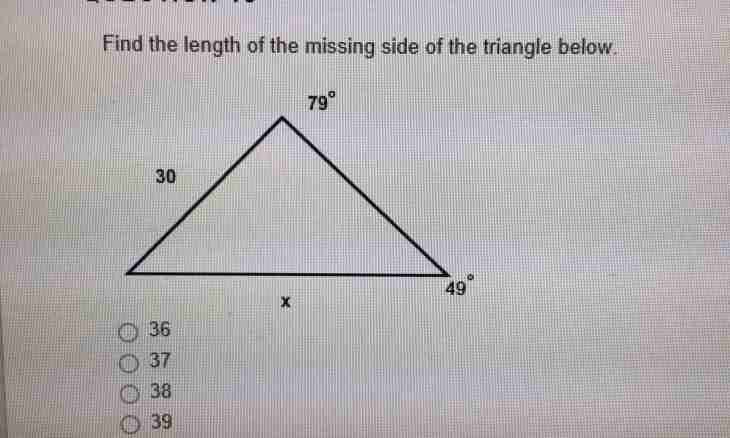Cosine - one of trigonometrical functions which is applied in the solution of geometrical and physical tasks. Actions with vectors also seldom do without use of a cosine. There are several ways of calculation of a cosine of the angle from the simplest arithmetic actions before decomposition in a row of Taylor. The choice of a way depends on the necessary accuracy of value of a cosine.
Instruction
1. Bradis's tables are known to any school student. He made a set of laborious calculations, but saved mathematicians from labor-consuming calculation of values of the main trigonometrical functions for a large number of corners. Before wide circulation of calculators and computers these tables were used practically by all engineers, mathematicians, physics and students.
2. It is very easy to calculate a cosine of the angle according to the table. It is enough to find corner degrees in a column of values of corners, and then to go on a line of the table before crossing with minutes of a corner. In the drawing the fragment of the table of Bradis is shown. It is visible that the value of a cosine for a corner 72 °30' is 0.3007. It is possible to recognize values of functions to within 0.0001 by Bradis's tables, for the majority of calculations such accuracy is quite sufficient.
3. Initially trigonometrical functions were connected with a rectangular triangle and a ratio of its parties. It is possible to remember it and to apply the known ratios if the angle is acute. Construct a rectangular triangle with the set corner. For this purpose carry out two beams and lower from any on one of them a perpendicular to another. Now, if to designate points of intersection of beams by the letters A, B and S, it is possible to claim that cos ∠BAC = to CA/AB or the relation of AC leg, adjacent to it, to AB hypotenuse. Accuracy of this method is low and strongly depends on the accuracy of constructions.
4. For best accuracy calculations trigonometrical functions display in Taylor's ranks. You watch Taylor's number for a cosine in the drawing. Decomposition in a row allows to calculate a cosine with any accuracy. The accuracy is higher, the more members of a row should be found. Bradis in the tables displayed a cosine in a row and found the first several members. Modern calculators do the same.
5. Try to calculate manually value of a cosine for 72 °30'. For this purpose at first transfer a corner to radians: 72 °30' = 72.5 ° *π I am glad / 180 ° = 1.2654 is glad (notice that the value of number π should be taken rather exact too, in this formula it is used π ≈ 3.1416). Now substitute this value in a row and find several first members of a row: 1 - 1.2654^2/2 + 1.2654^4/24 - 1.2654^6/720 + 1.2654^8/40320 = 1 - 0.8006 + 0.1068 - 0.0057 + 0.0002 = 0.3006, where 720 = 6!, 40320 = 8!. Thus, cos 72 °30' = is glad to cos 1.2654 ≈ 0.3006.

